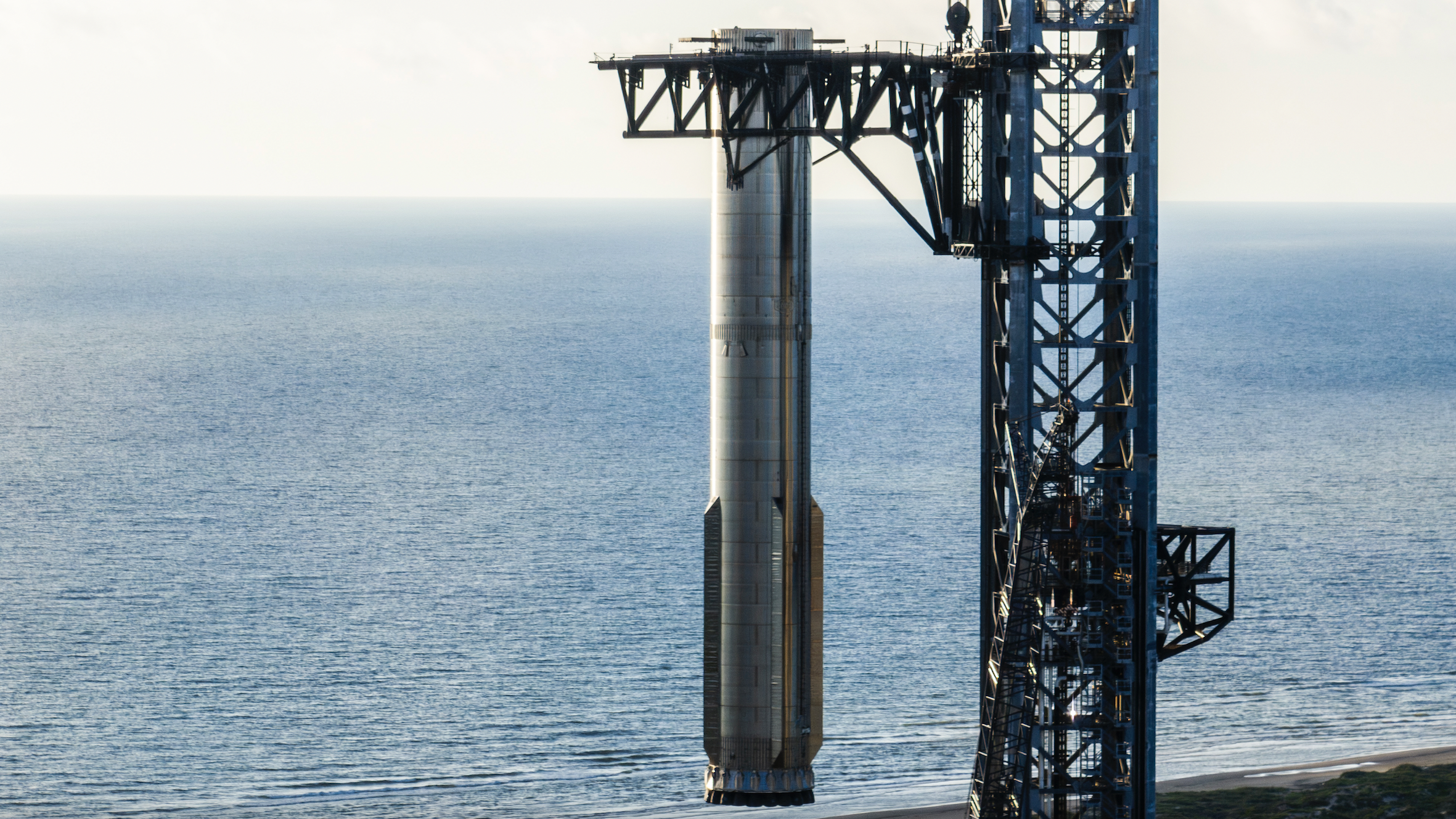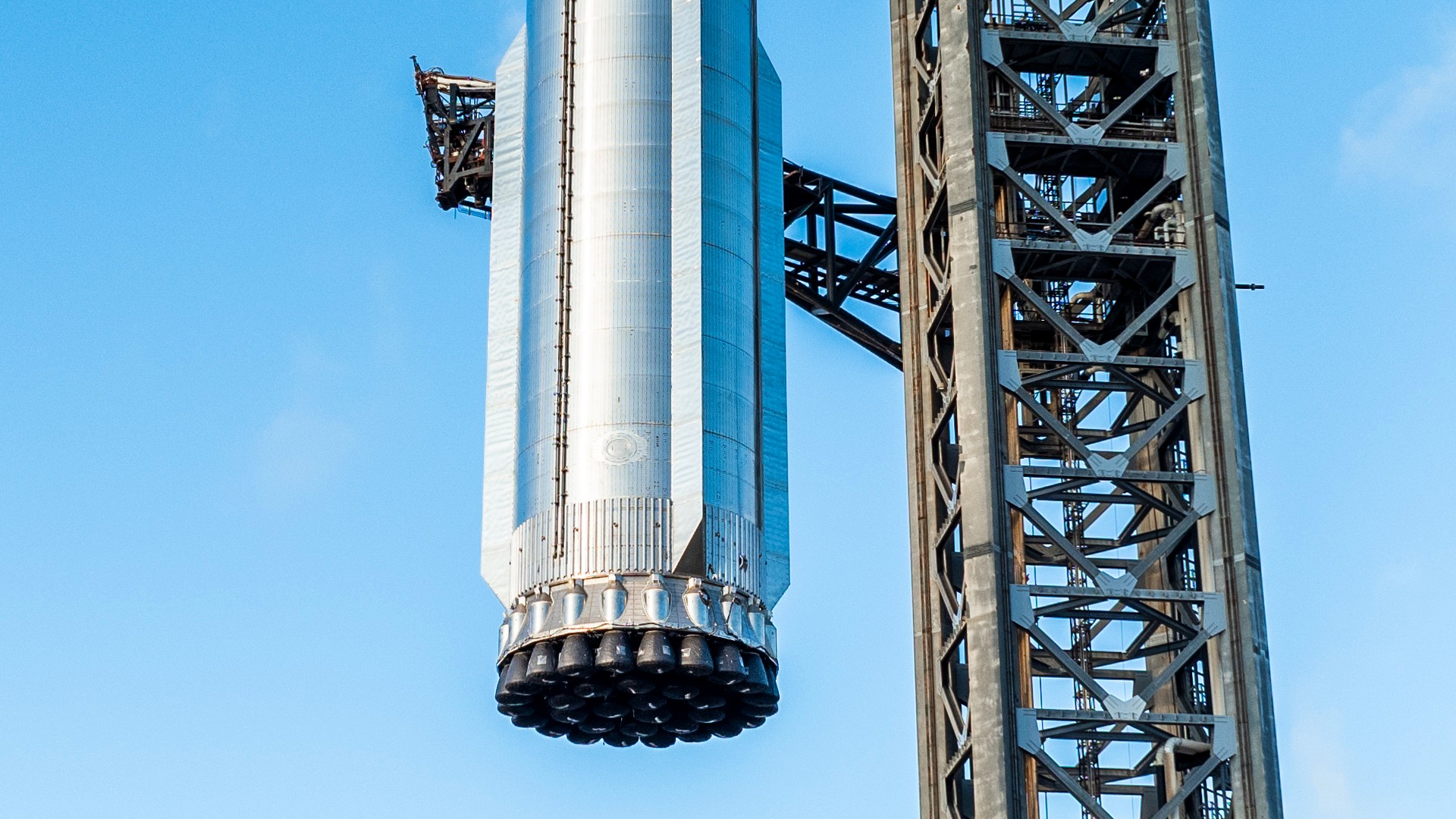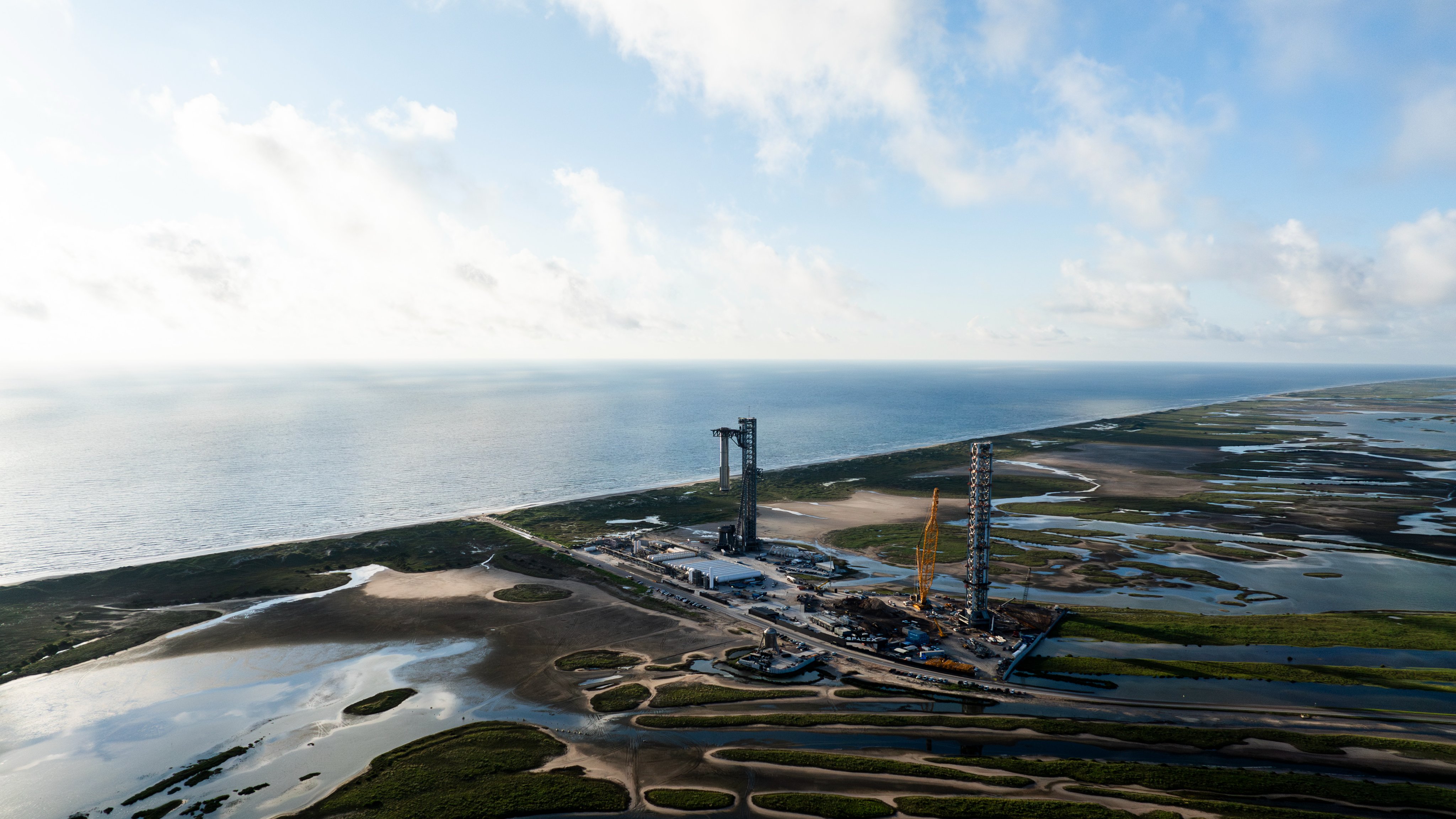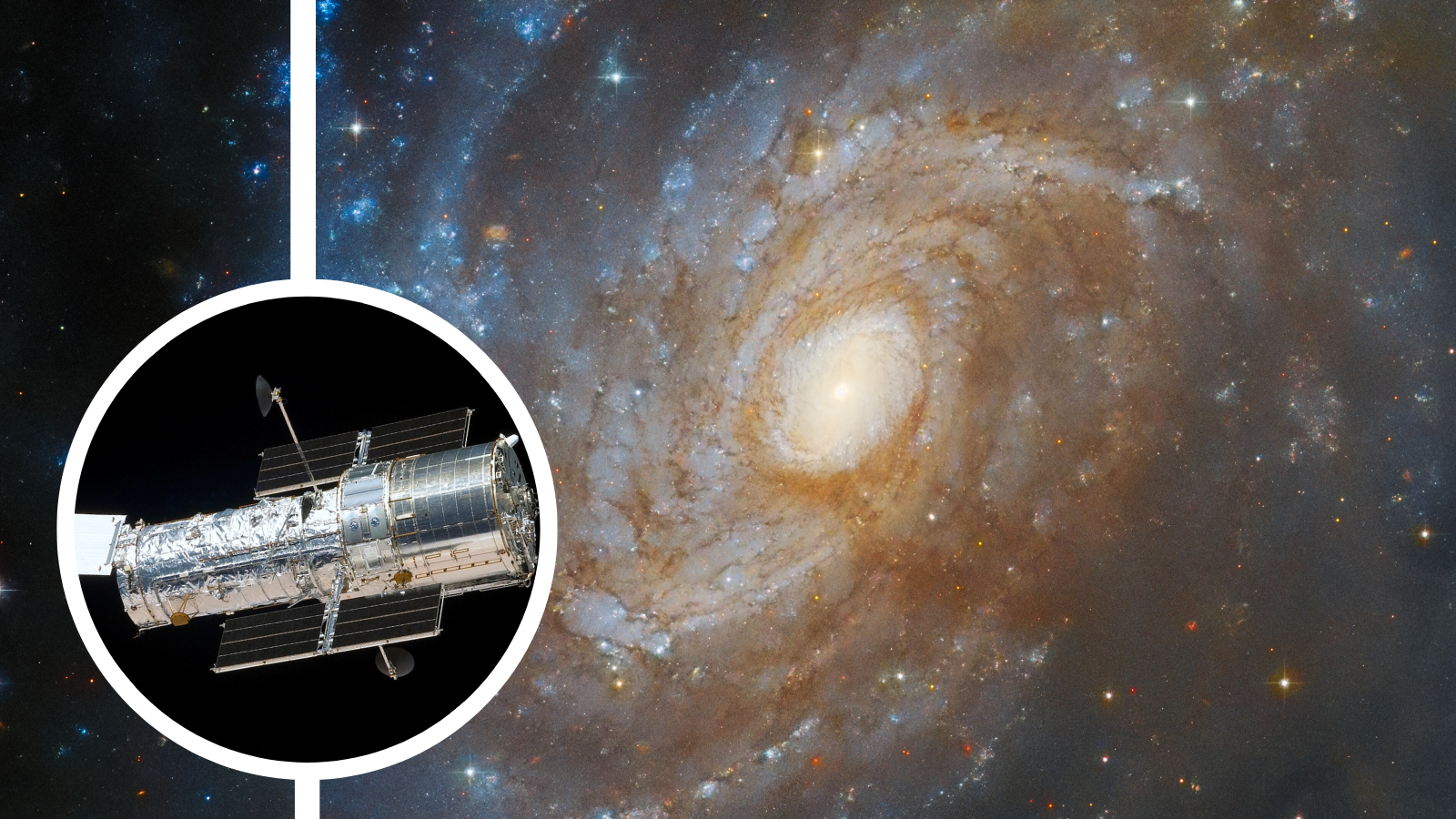
SpaceX is gearing up to make spaceflight history again.
During the next test flight of its Starship megarocket, SpaceX plans to catch the vehicle's huge first-stage booster, known as Super Heavy, using the "chopstick" arms of the launch tower at its Starbase site in South Texas.
SpaceX is known for its trailblazing achievements in rocket reuse, but this would be next-level. Landing a booster back on the launch mount — rather than on a ship at sea or on a designated touchdown pad on terra firma — would slash the time needed for inspection and refurbishment, enabling much more efficient reflight, SpaceX founder and CEO Elon Musk has said.

The chopstick arms were designed to lift Starship's two elements — Super Heavy and the 165-foot-tall (50 meters) upper stage, called Starship or simply "Ship" — onto the launch mount. SpaceX has been practicing with the arms recently in anticipation of expanding their role, as the company revealed today (Sept. 20) in a post on X.
Related: SpaceX's Starship won't be licensed to fly again until late November, FAA says
"Starbase tower lifts the Super Heavy booster for Flight 5 to expected catch height," SpaceX wrote in the post, which shared four photos of the operation.
As that post notes, the upcoming liftoff will be the fifth for Starship, a 400-foot-tall (122 m) vehicle that SpaceX thinks will make Mars settlement and other ambitious exploration feats economically feasible.
Get the Space.com Newsletter
Breaking space news, the latest updates on rocket launches, skywatching events and more!

Starship's four flights to date occurred in April and November of 2023 and March and June of this year.
The rocket has performed better on each successive liftoff. For example, the debut mission lasted just four minutes; SpaceX sent a detonation command after Starship's two stages failed to separate as planned and the vehicle began to tumble in the skies over South Texas.
But the most recent launch was a complete success, according to SpaceX. Super Heavy and Ship separated on time, and the latter reached orbital velocity as planned. Both stages returned to Earth intact, surviving their trips through the atmosphere and splashing down in the ocean (in two different parts of the world).

SpaceX says it has been ready to launch Starship's fifth test flight since early August, but the liftoff is likely still several months away. The U.S. Federal Aviation Administration (FAA) has said it needs more time to assess the potential environment impact of the launch, and to assess modifications SpaceX made to the Starship vehicle and flight plan after Flight 4. That review isn't expected to be done until late November.
SpaceX is not happy about the delay. Last week, it published a lengthy blog post criticizing the FAA's pace of operations and the regulatory environment for launch providers more generally.
Join our Space Forums to keep talking space on the latest missions, night sky and more! And if you have a news tip, correction or comment, let us know at: community@space.com.

Michael Wall is a Senior Space Writer with Space.com and joined the team in 2010. He primarily covers exoplanets, spaceflight and military space, but has been known to dabble in the space art beat. His book about the search for alien life, "Out There," was published on Nov. 13, 2018. Before becoming a science writer, Michael worked as a herpetologist and wildlife biologist. He has a Ph.D. in evolutionary biology from the University of Sydney, Australia, a bachelor's degree from the University of Arizona, and a graduate certificate in science writing from the University of California, Santa Cruz. To find out what his latest project is, you can follow Michael on Twitter.
-
likecomments My guess is they will use the one they catch next trial for the museum. Assuming the corrupt FAA stops playing political games and starts doing what they do best, which is nothing.Reply









